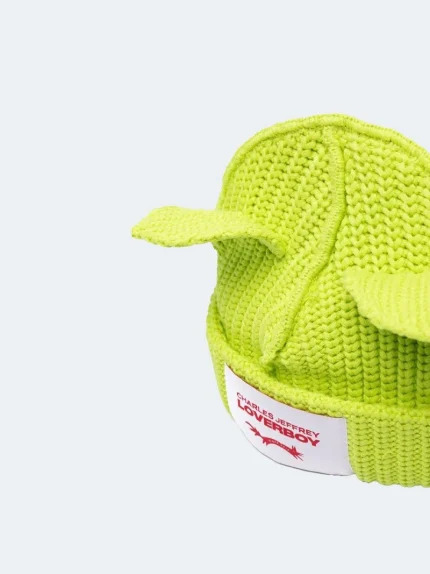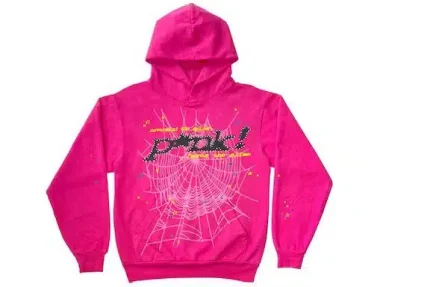The Loverboy Hat: Where Rebellion Meets Romance

A Symbol of Subversive Style
In an age of fast fashion and fleeting trends, the Loverboy Hat stands tall—an unapologetic declaration of individuality, emotion, and rebellion. This isn’t just an accessory; it’s a cultural artifact, a wearable piece of art born out of the mind of Charles Jeffrey, the Scottish designer behind Loverboy. With its distinctive ear flaps, bright hues, and often distorted silhouettes, the Loverboy hat has carved out a place in fashion history. It’s not merely something you wear to stay warm—it’s a statement you make, a feeling you inhabit.
Rooted in the club scene of London, the hat encapsulates the raw spirit of self-expression. It’s whimsical yet punk, theatrical but deeply personal. When someone wears a Loverboy hat, they’re not just participating in fashion—they’re participating in a movement. This headpiece has become iconic, spotted everywhere from underground raves to high-fashion runways, and its presence always speaks volumes without saying a word.
The Birth of an Icon: A Hat With a Narrative
To understand the power of the Loverboy hat, we must first understand the context of its birth. Charles Jeffrey, the mastermind behind the brand, founded Loverboy as a club night before it morphed into a fashion label. His creative universe blends queer identity, DIY aesthetics, historical references, and a splash of theatrical madness. The Loverboy hat emerged as an embodiment of this complex artistic world—a hybrid between costume and couture, play and politics.
Inspired by both childhood nostalgia and countercultural style, the hat often evokes imagery reminiscent of gnome hoods, fantasy role-play, and 90s rave culture. At a glance, it can appear innocent or even childish. But on closer inspection, it becomes clear that this is a hat with teeth. It’s deliberately strange. It’s meant to provoke, to amuse, to unsettle. It breaks conventional fashion norms—and that is its magic.
From Club Kids to Couture: How the Hat Took Over
Fashion insiders often talk about “runway to retail,” but the Loverboy hat flipped that idea on its head. It first gained traction in underground circles: worn by queer creatives, club kids, gender-nonconforming individuals, and artists who found solace and power in its oddness. The hat became a safe space—something one could wear to step outside societal roles and into something fantastical.
Soon, the high-fashion world couldn’t ignore it. Designers, stylists, and photographers began integrating the hat into editorials and campaigns. Even celebrities known for their bold fashion choices—like Harry Styles, Ezra Miller, and Tilda Swinton—gravitated toward its radical flair. The hat had graduated from niche to necessity.
But despite its ascent, it never lost its roots. Even on the world’s most prestigious catwalks, the Loverboy hat retained its integrity. It didn’t get polished up or watered down. If anything, it became more wild, more experimental—proof that authenticity still has a place in a commercial world.
Material and Make: Quality Behind the Quirk
A common misconception about the Loverboy hat is that it’s purely whimsical, existing only for shock value or visual punch. But anyone who has worn or even touched one knows better. These hats are constructed with meticulous attention to detail. From premium wool and felt to luxe knit materials, the fabric choices are bold yet thoughtfully considered. They’re designed to retain structure while allowing for movement, play, and drama.
Many versions of the hat are hand-stitched or made in small batches. This slow-fashion approach ensures that each piece feels unique—like a relic from a parallel universe. It’s also a direct opposition to mass-produced streetwear, offering a depth and soul that many fast fashion accessories lack.
Furthermore, the hat isn’t just about aesthetics. It offers real functionality. The oversized ear flaps serve a purpose in colder climates, and the snug fit ensures comfort, not just style. That’s the secret sauce of the Loverboy hat: it’s performative and practical, loud and luxurious, eccentric yet enduring.
The Psychology of the Loverboy Hat
Wearing a Loverboy hat isn’t just about fashion—it’s a psychological experience. The moment you put it on, your persona shifts. It encourages play, confidence, and even vulnerability. It’s armor and invitation, mask and mirror.
This transformation is no accident. Charles Jeffrey himself has spoken about the importance of clothing as a medium for identity exploration. The Loverboy hat creates space for fantasy in everyday life. It allows the wearer to defy norms, blur boundaries, and lean into parts of themselves that society may otherwise stifle.
Fashion has always had the potential to empower, but few pieces do so as directly as the Loverboy hat. It’s more than style—it’s permission. Permission to feel, to express, to embody contradictions. And in a world increasingly obsessed with binaries, that permission is both radical and necessary.
The Cultural Impact: More Than a Trend
Fashion trends come and go, but cultural shifts leave imprints—and the Loverboy hat belongs to the latter. It’s been worn in protests, featured in drag performances, and spotted in zines and art collectives across the globe. It transcends gender, age, and even geography. There’s a global tribe of wearers who may not know each other, but who are connected through the shared language of the hat.
In art schools, it’s discussed as a study in form and rebellion. In fashion theory, it’s often cited in conversations about queerness in style. And in street culture, it’s revered as a beacon of authenticity. That is no small feat for a humble piece of headwear.
Moreover, its place in the fashion ecosystem has inspired other designers to take bolder risks. It showed that strangeness could be successful, that anti-fashion could coexist with elegance, and that garments could be emotionally intelligent. In short, it gave permission to dream wildly—and dress accordingly.
Loverboy Hat in the Age of Uniformity
Today’s world is saturated with influencers wearing the same thing, following the same algorithm, and fitting into the same curated boxes. The Loverboy hat feels like a defiant middle finger to that sameness. It doesn’t fit into tidy fashion formulas. You can’t filter it into normal. And that’s precisely why it resonates.
The internet, particularly platforms like Instagram and TikTok, has amplified the hat’s reach. But even in that hyper-curated space, the hat refuses to be aestheticized into blandness. It retains its weirdness, its warmth, its wit. It thrives because it resists conformity.
Wearing a Loverboy hat is not about showing off—it’s about showing up. For yourself. For your quirks. For the parts of you that don’t “fit.” It’s for the misfits, the romantics, the rebels, the dreamers.
Final Thoughts: A Love Letter to the Loverboy Hat
In a world that often feels detached, cynical, and commodified, the Loverboy hat feels like a deep breath of fresh, rebellious air. It’s playful but profound. Unusual but utterly necessary. It’s not for everyone—and that’s the point. It invites only the brave, the bold, the beautifully bizarre.
Whether you’re stepping into a club, onto a catwalk, or just out into the world on a gray Tuesday afternoon, putting on a Loverboy hat is like whispering to yourself: “I am here. I am art. I am mine.”
So here’s to the Loverboy hat—not just a fashion accessory, but a cultural revolution stitched into felt and fantasy. Wear it not just to be seen, but to truly see yourself.


